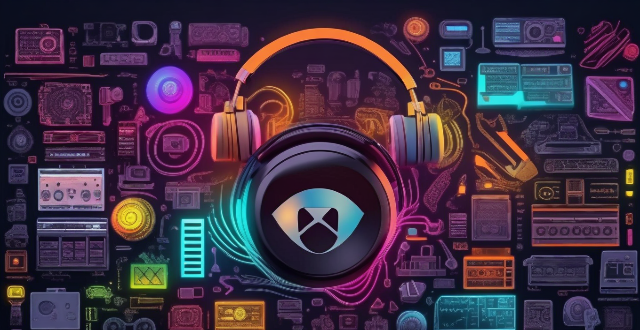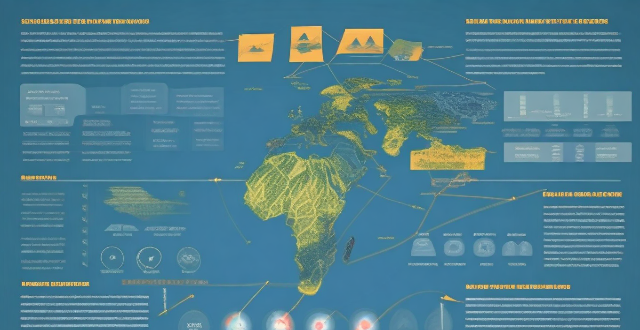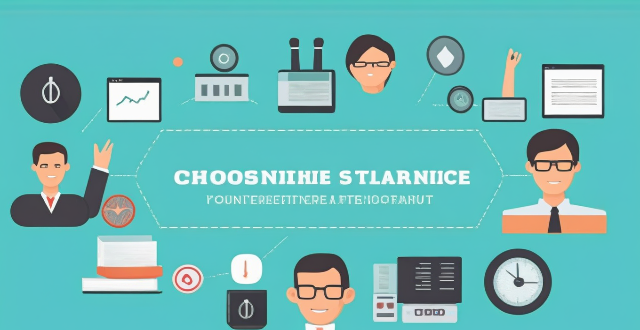Interactive Virtual

How has augmented reality transformed fan engagement in sports ?
Augmented Reality (AR) is revolutionizing fan engagement in sports by offering immersive experiences that blend physical and digital elements. AR enhances viewing experiences with interactive overlays and virtual seats, enables in-game interaction through team and player interaction and game day activities, boosts merchandise and sponsorship opportunities with interactive ads and virtual try-ons, aids navigation and wayfinding in stadiums, and encourages social sharing through augmented selfies and virtual reality social spaces. These advancements are transforming the way fans connect with sports and teams, creating more engaging and interactive experiences.

What impact does virtual reality have on education ?
Virtual reality (VR) is a rapidly evolving technology that has the potential to revolutionize the way we learn and teach. It offers an immersive, interactive experience that can engage students in new and exciting ways. In this article, we will explore the various impacts of virtual reality on education. One of the most significant benefits of VR in education is its ability to create realistic simulations. These simulations allow students to experience complex concepts and scenarios that would be difficult or impossible to replicate in a traditional classroom setting. For example, medical students can practice surgical procedures without risking harm to real patients, while history students can explore ancient civilizations and witness historical events firsthand. VR also increases student engagement by making learning more interactive and fun. Instead of passively listening to lectures or reading textbooks, students can actively participate in their learning through immersive experiences. This increased engagement can lead to better retention of information and improved academic performance. With the rise of online education, VR can provide students with access to resources and opportunities that may not be available in their local area. Students can attend virtual field trips, visit museums and historical sites, and even attend classes at prestigious universities from anywhere in the world. VR also has the potential to make education more inclusive for students with disabilities or those who may struggle in traditional classroom settings. For example, students with social anxiety can practice public speaking in a safe, controlled environment, while those with physical disabilities can participate in activities that may be otherwise inaccessible. VR allows students to work on projects together in a virtual space, fostering collaboration and teamwork skills. They can create 3D models, design virtual environments, and even program their own games or applications. This type of hands-on learning encourages creativity and problem-solving skills. VR also enables global collaboration between students from different countries and cultures. Students can work together on projects, share ideas, and learn from one another in real-time. This exposure to diverse perspectives can broaden their understanding of the world and prepare them for success in an increasingly globalized workforce. While the potential benefits of VR in education are numerous, there are also challenges and considerations that must be addressed. These include cost, technical requirements, health concerns, and educational effectiveness. A balanced approach that incorporates both technologies is essential for optimal outcomes.

How are virtual reality and augmented reality changing the way we experience entertainment ?
Virtual reality and augmented reality technologies are revolutionizing entertainment by offering immersive, interactive, and personalized experiences. They have impacted various domains of entertainment, including gaming, movies, sports, and music. VR headsets provide an immersive gaming experience, while AR games bring gaming into the real world. VR cinema offers an immersive movie-watching experience, and AR applications enhance the viewing experience by adding virtual elements to the real world. Sports fans can enjoy a more immersive experience with VR platforms and AR applications that display real-time statistics and replays. Virtual concerts and AR-enhanced performances offer unique and personalized music experiences. Overall, these technologies make entertainment more engaging and enjoyable than ever before.

In what ways can virtual reality be utilized for medical training and therapy ?
Virtual reality is revolutionizing medical training and therapy by providing immersive, interactive experiences that simulate real-world scenarios. In medical training, VR offers hands-on practice in a safe environment, multisensory learning experiences, interactive anatomy education, and tools for surgical planning and collaboration. In therapy, it is used for pain management, motor skills rehabilitation, cognitive rehabilitation, mental health treatment, specialized interventions like ASD therapy, and neurorehabilitation. The potential of virtual reality in healthcare is vast, with ongoing technological advancements expected to bring further innovations in this field.

How can virtual reality be incorporated into sports training and performance enhancement ?
Virtual reality is revolutionizing sports training and performance enhancement by offering a safe, controlled environment for skill development, tactical analysis, mental preparation, rehabilitation, and team building. Athletes can practice skills in realistic simulations, receive immediate feedback, repeat movements without fatigue, visualize game plans, engage in interactive scenarios, analyze opponents, develop mindfulness techniques, visualize success, manage distractions, manage pain during rehabilitation, recover motor functions, receive mental health support, foster camaraderie through shared experiences, enhance communication through role playing, and promote mutual respect among diverse players. As virtual reality technology advances, it will become an integral part of future sports training programs.

How do virtual classrooms compare to traditional classrooms in terms of learning effectiveness ?
The text presents a comparative analysis of virtual classrooms and traditional classrooms in terms of learning effectiveness. The comparison is structured around several aspects: 1. **Learning Environment**: Traditional classrooms offer physical interaction but limited resources, while virtual classrooms provide flexibility and access to diverse resources. 2. **Teaching Methods**: Direct instruction and group work are emphasized in traditional settings, whereas interactive tools and personalized learning are characteristic of virtual environments. 3. **Student Participation**: Active participation and social dynamics are key in traditional classrooms, while virtual settings allow for asynchronous participation and cater to introverted students. 4. **Assessment and Feedback**: Immediate feedback and formative assessment are strengths of traditional classrooms, while automated feedback and summative assessment are advantages of virtual classrooms. 5. **Conclusion**: The choice between traditional and virtual classrooms depends on various factors, and an ideal approach could be a blended method that combines the best elements of both.

Can virtual exercise classes help elderly people stay socially active during isolation periods like lockdowns ?
Virtual exercise classes can be beneficial for elderly people during isolation periods, promoting social connections and physical health while being adaptable to different needs. However, challenges such as technology barriers, lack of personalized attention, and motivation must be addressed to ensure effectiveness and accessibility.

What are the benefits and drawbacks of virtual fan support events compared to in-person events ?
Virtual fan support events provide global accessibility, cost-Virtual fan support events provide global accessibility, cost- benefits but face challenges like limited cost-effectiveness, and safety benefits but face challenges like limited personal interaction and technical issues. Finding a balance between virtual and in-person events is crucial for meaningful connections.

How can I improve communication with my child through interactive activities ?
The text offers guidance on how to enhance communication between parents and children through engaging in interactive activities. It outlines the benefits of such activities, including boosting emotional connection, promoting learning, enhancing social skills, and encouraging open communication. Specific strategies are suggested for choosing age-appropriate activities, involving children in activity selection, setting aside dedicated time, fostering a positive environment, being fully present, encouraging equal participation, reflecting on experiences together, and integrating learning opportunities. Examples of interactive activities include board games, art projects, outdoor adventures, cooking, building blocks or puzzles, reading stories, role-playing games, and science experiments. To maintain engagement, tips such as varying types of activities, adapting to mood, celebrating successes, and learning from mistakes are recommended. The conclusion emphasizes that interactive activities can significantly improve communication by creating a nurturing environment that fosters open dialogue and mutual respect.

How can technology be used to enhance the food festival experience ?
Technology can enhance the food festival experience by offering convenience, customization, real-time updates, and interactive experiences. Online ordering platforms allow attendees to avoid long queues and have food delivered directly to their location. Mobile apps provide features like interactive maps, push notifications, and feedback systems. VR/AR technologies offer immersive experiences such as virtual food tours and interactive cooking classes. Incorporating these technological advancements into event planning can create a more enjoyable and memorable experience for all attendees while increasing engagement with the brand.

Can you provide examples of innovative teaching strategies for online education platforms ?
Innovative Teaching Strategies for Online Education Platforms include interactive video lectures, virtual collaborative projects, gamification of learning, personalized learning paths, real-time feedback and assessment, multimedia content and interactive tools, flipped classroom model, social learning networks, augmented reality and virtual reality experiences, and microlearning and bite-sized content. These strategies aim to enhance student engagement, retention, and success in an online learning environment.

How has virtual reality technology been incorporated into sports equipment ?
The integration of virtual reality technology into sports equipment has revolutionized the way athletes train, perform, and recover from injuries. It also enhances fan engagement by providing unique perspectives of live sporting events. The main applications include simulation and training, performance analysis, rehabilitation and recovery, and fan engagement.

Can virtual reality be used to improve sports training ?
Virtual reality (VR) technology has the potential to revolutionize sports training by providing athletes with immersive and interactive experiences that can enhance their skills and performance. VR can create realistic simulations of game environments, provide instant feedback on an athlete's performance, reduce the risk of injury, make training more engaging and enjoyable, allow athletes to train anywhere, customize training programs, and save money on travel expenses and equipment costs. Examples of VR in sports training include basketball, golf, football, and boxing. As VR technology continues to advance, it will likely become an increasingly popular tool for sports training across a wide range of disciplines.

How does climate change influence the future of remote work and virtual employment ?
The article discusses the impact of climate change on the future of remote work and virtual employment. It states that rising temperatures, extreme weather events, and environmental concerns are driving factors for the shift towards remote work arrangements. As a result, there is an increasing demand for remote work options, technology advancements to support virtual employment, and a changing work culture that focuses on results rather than physical presence. The article concludes that embracing these changes can lead to a sustainable and efficient future of work.

What are the benefits and challenges of using virtual reality in teacher training ?
Virtual reality (VR) can provide an immersive and interactive environment for teacher training, allowing trainees to experience real-life scenarios and practice their teaching skills in a safe and controlled setting. This can help them develop confidence and improve their ability to handle various situations that may arise during their career. VR can simulate real-life situations such as classroom management, student behavior, and curriculum implementation. This allows trainees to practice their problem-solving skills and decision-making abilities in a risk-free environment. By experiencing these situations firsthand, they can better understand the challenges and complexities of teaching. However, there are also challenges associated with using VR in teacher training. The high cost of technology, limited availability of content, technical issues and maintenance, and health concerns are some of the main challenges. Despite these challenges, VR has the potential to revolutionize the way educators are prepared for their roles. As technology continues to advance, it will be interesting to see how VR evolves and becomes more accessible for teacher training programs.

How can virtual reality and augmented reality be used to enhance transportation experiences ?
The article explores the potential of virtual reality (VR) and augmented reality (AR) technologies to improve transportation experiences. It outlines various ways in which these technologies can enhance safety, provide entertainment, and offer new interaction methods with vehicles and infrastructure. Key points include: 1. **Improving Safety** through VR simulation training for drivers and AR-guided maintenance manuals. 2. **Providing Entertainment** by creating virtual windows for passengers, offering immersive gaming experiences, and providing real-time public transportation updates. 3. **Offering New Ways of Interaction** with vehicles and infrastructure, such as personalized travel environments, augmented signage, and maintenance alerts. 4. The conclusion emphasizes the transformative potential of VR and AR in the transportation sector and anticipates further innovations as these technologies advance.

How has virtual reality technology evolved over the past few years ?
Over the past few years, VR technology has significantly evolved, transforming from a niche to a mainstream platform for gaming, education, and various applications. Key developments include hardware improvements such as lighter designs and higher resolution displays; software advancements like enhanced graphics and expanded content libraries; and application expansion into fields like healthcare and architecture. Future outlooks suggest further innovations in wireless connectivity and hybrid reality integration.

What are the future trends in remote education platforms ?
The future of remote education platforms is expected to be shaped by several key trends that will enhance the learning experience, improve accessibility, and make education more personalized and efficient. Here are some of the anticipated trends: 1. Augmented Reality and Virtual Reality: AR and VR technologies can create immersive learning environments where students can interact with educational content in a more engaging way. For subjects like science or engineering, AR/VR can provide practical experiences without the need for physical resources. 2. Artificial Intelligence and Machine Learning: AI can personalize the learning experience by adjusting the curriculum based on individual student progress and preferences. AI can automate grading and provide instant feedback, freeing up teachers' time for more interactive activities. 3. Cloud Computing and Scalability: Cloud-based platforms ensure that educational resources are always available and easily scalable to accommodate large numbers of users. The cloud facilitates collaboration between students and teachers across different geographical locations. 4. Mobile Learning and Microlearning: Mobile apps and responsive designs allow learners to access educational materials anytime, anywhere. Microlearning modules enable quick, focused sessions that cater to short attention spans and busy schedules. 5. Gamification and Interactive Content: Incorporating game elements into learning can increase student motivation and engagement. Interactive simulations can help students understand complex concepts by experiencing them firsthand. 6. Blockchain Technology: Blockchain can provide secure and fraud-proof ways to issue and verify academic certificates. It ensures the integrity of educational records and transactions within the platform. 7. Analytics and Big Data: Advanced analytics can track student performance and identify areas for improvement. Big data can suggest resources or courses tailored to individual student needs. 8. Internet of Things (IoT) Integration: IoT devices can monitor classroom environments and adjust settings to optimize learning conditions. IoT-enabled labs can give students remote access to real-world equipment for experiments. 9. Enhanced Security Measures: With increased digitalization, robust security measures will be crucial to protect sensitive student information. Platforms must ensure a safe environment free from cyber threats and harassment. 10. Social Learning Networks: Online social networks can foster a sense of community among students, encouraging peer-to-peer learning. Connecting students with mentors or industry professionals can provide valuable guidance and networking opportunities.

What are some innovative tools for interactive studying ?
Innovative Tools for Interactive Studying Interactive studying has become increasingly popular in recent years as technology continues to advance. There are many innovative tools available that can enhance the learning experience and make it more engaging and effective. Some of the most popular ones include Quizlet, Khan Academy, Duolingo, Kahoot!, and Edpuzzle. These tools offer various modes of interaction, such as flashcards, videos, games, quizzes, and social platforms. By incorporating these tools into your learning routine, you can make studying more engaging, effective, and enjoyable.

How can I make a family dinner more interactive and engaging ?
Making family dinners more interactive and engaging requires planning and creativity. Incorporating themes, open-ended questions, cooking tasks, gratitude jars, and music can create an enjoyable experience that brings the family closer together while promoting communication, teamwork, and positivity.

How can parents encourage their children to develop new skills through interactive activities ?
The article provides strategies for parents to encourage their children's skill development through interactive activities. It emphasizes the importance of hands-on, engaging learning experiences and offers specific tips for creating a supportive environment, involving children in planning, modeling behavior, offering praise, making learning fun, allowing for trial and error, providing practice opportunities, connecting learning to real life, and being patient and persistent. The goal is to help children become well-rounded individuals who are motivated and equipped for future challenges.

Are there any interactive platforms where I can practice programming skills ?
Interactive Platforms for Programming Practice: - Codecademy offers free courses, advanced paid lessons, and project building. - LeetCode provides coding problems, discussion forums, and contests. - HackerRank presents coding challenges across various tech domains. - Exercism features multilingual exercises with mentor support and community interaction. - Repl.it is a cloud-based IDE with multi-language support, collaboration options, and templates.

How can educational game developers create engaging and interactive games without sacrificing educational content ?
Educational game developers can create engaging and interactive games without sacrificing educational content by focusing on clear objectives, gamification techniques, feedback mechanisms, collaborative features, and customization options. These key aspects can help developers create experiences that are both fun and educational for players of all ages.

What resources are available for educators looking to incorporate climate change into their lesson plans ?
The text provides a summary of resources for educators to incorporate climate change into lesson plans, including online resources, books and textbooks, videos and films, and interactive tools and simulations. The resources are organized into four categories: online resources such as NASA Climate Kids and National Geographic Education; books and textbooks like "The Sixth Extinction" and "Climate Change: A Multidisciplinary Approach"; videos and films such as "Before the Flood" and "Chasing Ice"; and interactive tools and simulations like C-Learn and Climate Interactive. These resources can be used to create engaging lesson plans that cover various aspects of climate change science, social impact, and solutions.

How can technology be used to enhance reading comprehension ?
Technology has revolutionized the way we learn and acquire knowledge. It has also transformed the way we read and comprehend written materials. In this article, we will explore how technology can be used to enhance reading comprehension. Interactive textbooks are digital versions of traditional textbooks that allow students to interact with the content in a more engaging way. They include multimedia elements such as videos, animations, and interactive quizzes that help students understand complex concepts better. Interactive textbooks also provide immediate feedback, allowing students to identify their strengths and weaknesses and adjust their learning accordingly. Audiobooks and e-readers are becoming increasingly popular among readers of all ages. They offer several advantages over traditional paper books, including portability, accessibility, and customization options. Audiobooks are particularly useful for improving listening skills and building vocabulary, while e-readers allow users to highlight important passages, take notes, and look up unfamiliar words easily. Online learning platforms such as Coursera, Khan Academy, and Udemy offer a wide range of courses on various subjects, including reading comprehension. These platforms provide interactive lessons, practice exercises, and assessments that help students develop their reading skills at their own pace. They also offer social learning opportunities through discussion forums and peer reviews. Gamification is the use of game design elements in non-game contexts to enhance user engagement and motivation. In the context of reading comprehension, gamification can involve turning reading assignments into games or challenges that require students to apply what they have learned in a fun and rewarding way. For example, a teacher might create a treasure hunt where students must find hidden clues within a text or solve puzzles based on the content they have read. Personalized learning involves tailoring instruction to meet the individual needs and preferences of each student. Technology can facilitate personalized learning by providing customized recommendations based on students' performance data and learning styles. For example, an adaptive learning system might recommend additional resources or activities for students who struggle with certain concepts or skills.

How do I choose the right online learning resource for my needs ?
When choosing an online learning resource, consider your learningWhen choosing an online learning resource, consider your learning quality, usability, cost consider your learning goals, style, content quality, usability, cost, and interactive features. Look for resources that align with your objectives, cater to your preferred method of learning, provide accurate and up-to-date information, are user-friendly and accessible, offer good value for money, and have interactive features and community support.